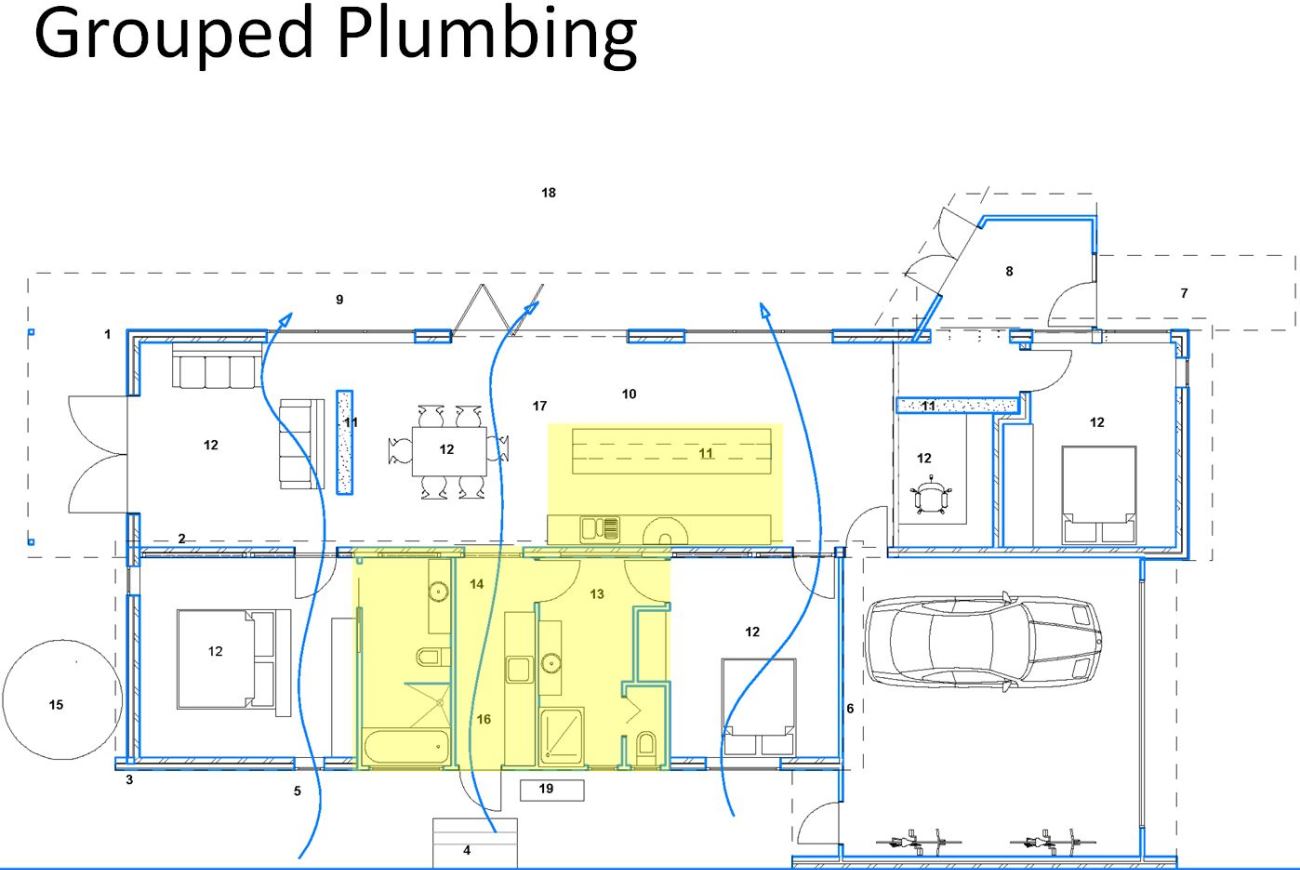Grouped Plumbing & Redwater
When designing we try to keep plumbing grouped and travelling in direct runs as much as possible. Not only is this easier for the plumber and therefore a bit cheaper, but it means that hot water outlets are never far from the hot water tank/unit. Therefore less time is taken for hot water to get to the tap, and so less clean water is wasted down the drain. It also means that there is less hot water sitting in the line when you turn the tap off, which saves energy.
Sometimes however because of the requirements of the brief, or land shape, you may get an outlying wet area in the floorplan. This often tends to be the ensuite of a master bedroom, located away from kids bedrooms in a quiet part of the house. How can we be water efficient in this situation? The answer is with an Australian invention called a Redwater Valve (see www.redwater.net.au). These great little devices sit in the hot water line, and have a third pipe which runs back to the rainwater tank. Internally they have a parafin valve. When the hot tap/shower is turned on the cold water in the line is sent out the 3rd pipe to the watertank. (Which is typically connected in to the house plumbing to flush toilets, run laundry and any external taps.) When the hot water arrives in the line, it melts the parafin in the valve, allowing a spring to move and the water is then directed to the hot tap/shower. In this way, you get your hot water, but are able to save the litres normally wasted down the drain!
Like any plumbing valve, maintenance may be required over time, so we tend to plumb the valves in under the vanity basins, so that they can easily be reached and adjusted should they need to be.
Over the course of the life of the house, thousands of litres will be saved by these 2 approaches.


